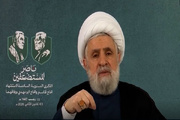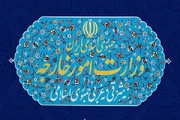Seyyed Mohammad Hosseini, Head of provincial office of the Cultural Heritage Organization told the ceremony on Wednesday that ancient man had been living in the hill of Neolithic central Iran who had settled in plains; “this is a turning point in the archaeology of the region, since it pushes further back in history when man had settled this part of Zagros. The man is estimated to be 40 when died,” he told in the ceremony.
Ghafour Kaka, the head of excavation expedition in the site of Sarsakhti castle hill in an eponymous village in Shazand told Cultural Heritage Research Center provided the details of the human skeleton; “it belongs to 7,500 years ago and had been buried in a crouching or squatting position; the settled humans had believed in afterlife. The evidence of this are tortoiseshell, stone tools, flint stones and bones buried along the dead; we have transferred the skeleton to Arak archaeological museum,” he detailed.
“The animal figurines found in the site are earthen and functioned as objects in rituals; the majority of them are now cracked and fragmented; probably, the hill had long been settled in Neolithic Age and had been connected to Central Zagros especially in the east of the mountain chain,” Kaka told the Research Center website. “The geographical position of the hill bestows a central position to the site where Zagros and the eastern half of the Iranian plateau meet, thus harboring elements of both cultures.”
“Our excavations reveal that the site had been settled since 8 millennia ago (Neolithic age); according to stratigraphic work of 2012, the site contained relics of Neolithic, Eneolithic, Bronze and Iron Ages, Parthian, Ilkhanid, and Qajar periods,” Kaka added. “In spring of 2016, our excavations sought to delve deep into the oldest human settlement of the site which revealed important Eneolithic and Neolithic relics in a small tranche of 6.4 meters,” Kaka detailed.
SH/3781532

























Your Comment